Introduction: In this article, Melissa Davenport Berry writes more about the Salem witch trials of 1692, focusing on the preservation efforts of Sarah Elizabeth Hunt. Melissa is a genealogist who has a blog, AnceStory Archives, and a Facebook group, New England Family Genealogy and History.
Today I continue my story on the 1692 Salem witchcraft trials and preservation. To recap: My last story covered Abner Cheney Goodell, who owned the largest collection of witchcraft books in the world. He published scholarly works on the 1692 Salem witch trials and lived at 4 Federal Street in Salem, Massachusetts, the location of the original jail that held many of the accused “witches.”
Abner’s home became more famous after his death, when his son Alfred Putnam Goodell unearthed the old jail and made the home into a museum known as the “Old Witch Jail and Dungeon.” Read more: Salem Witchcraft (part 1).
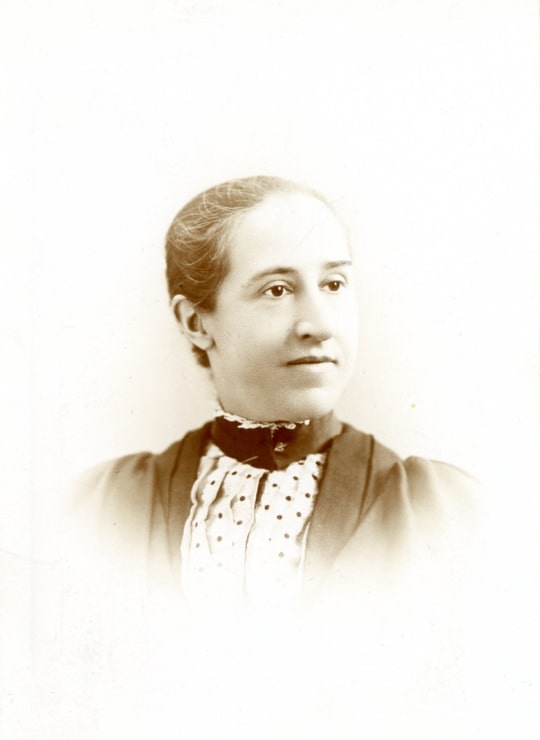
Abner married Martha Page Putnam, daughter of Alfred Putnam and Mary Page. Martha’s mother married Dr. Ebenezer Hunt after Mr. Putnam died, and the couple had a daughter Sarah Elizabeth Hunt (1849-1930), who lived with Abner and Martha at the Federal Street home.
Sarah was a passionate preservationist. One of her big projects was saving the Townsend-Bishop House, better known as the Rebecca Nurse Homestead (also spelled Nourse), located at 149 Pine Street in Danvers, Massachusetts.
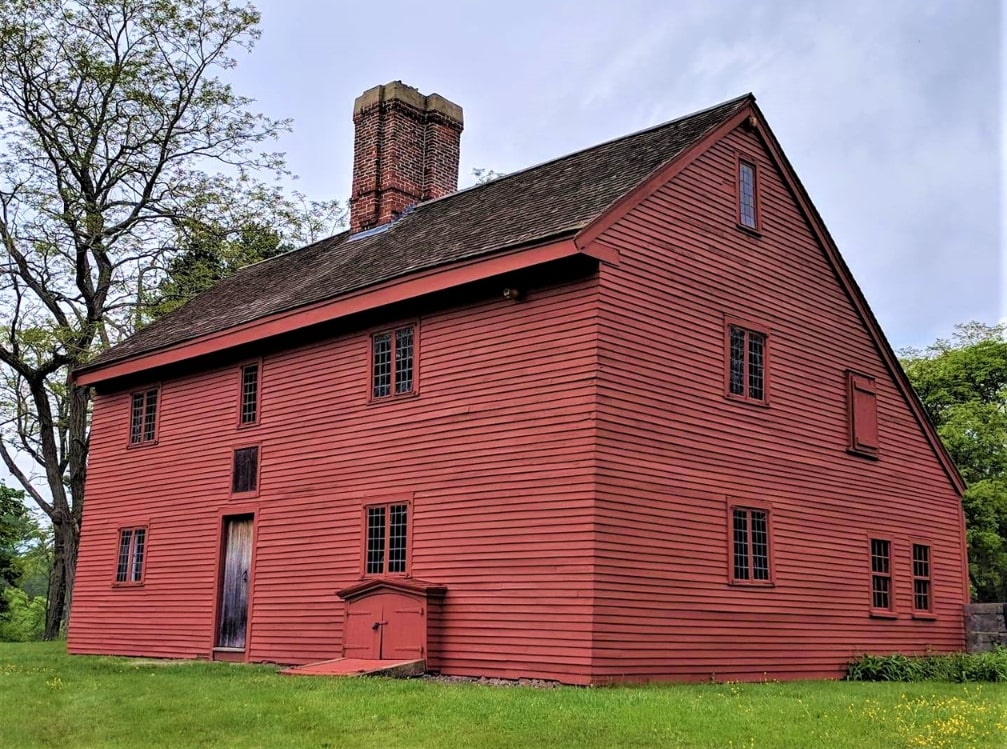
Rebecca Nurse was accused of practicing witchcraft and was held in the Salem jail. She was found guilty and ordered to be hanged on 19 July 1692.
The descendants of Rebecca who formed the Nurse Family Association gathered in July 1885 to unveil a monument to honor the memory of their ancestor.
Richard Trask, historian and archivist at the Danvers Archival Center at the Peabody Institute Library, kindly shared a photo of this event. (Other archival source material may be viewed at Americana-Archives.)
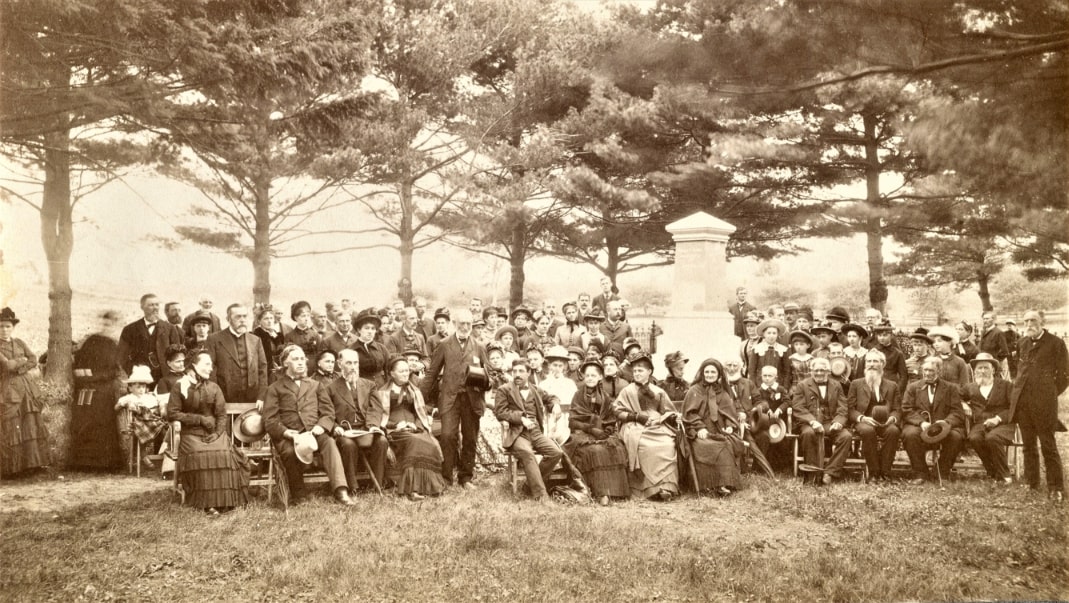
The inscription on the monument reads:
Rebecca Nurse, Yarmouth, England, 1621. Salem, Mass., 1692. “O Christian Martyr/who for Truth could die/When all about thee/owned the hideous lie! The world redeemed/from Superstition’s sway/Is breathing freer for thy sake today.” From the poem “Christian Martyr” by John Greenleaf Whittier.
When the Nurse homestead needed restoration and a new owner in 1906, Sarah Hunt stepped in to raise funds and support. Richard Trask noted Sarah was ahead of her time when it came to preservation and was very skilled at it.
To fundraise, Sarah used her connections with the societies she was active in, which included the Massachusetts branches of the Daughters of the American Revolution and Society of the Colonial Dames of America.
Shortly before she campaigned to restore the Nurse house, Sarah helped save the Dorothy Quincy Homestead in Quincy, Massachusetts, named for Dorothy Quincy, who became the wife of John Hancock.
Here is a 1904 news clip from the Boston Herald.
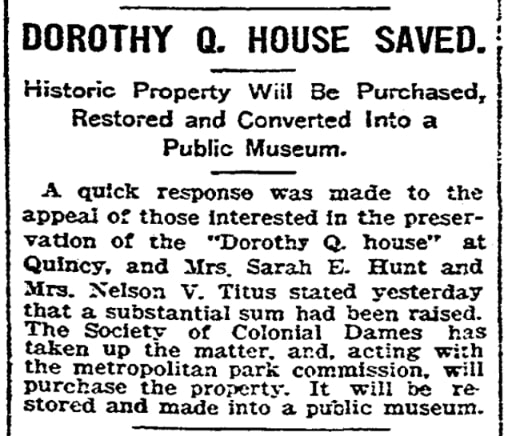
The same steps used to restore the Dorothy Quincy Homestead were applied to the Rebecca Nurse Homestead – including employing an expert architect of old houses, Joseph Everett Chandler, to do the restoration work.
I found two 1906 ads Sarah placed in the Danvers Current, in which she appealed to the residents to look upon the Nurse house as an auspicious business investment because the historic home would attract visitors to the town, supplying revenue for all.
In December of 1906 the Boston Herald reported on the fundraising effort.
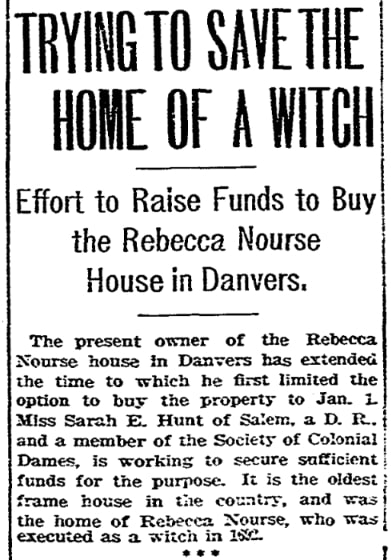
A couple of weeks later, the Boston Herald published this update.
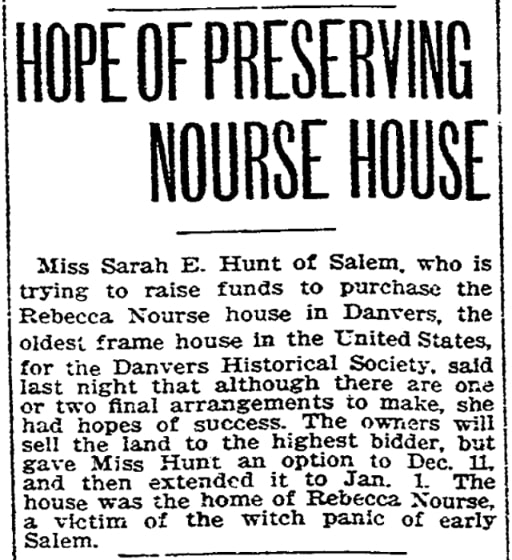
In February 1907 the Boston Globe reported that Sarah had been successful.
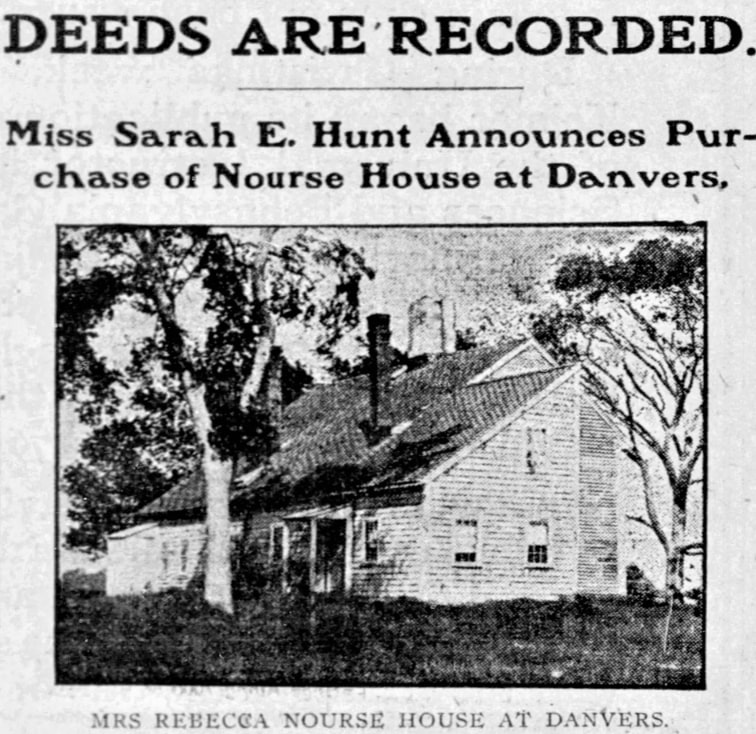
In this article, William Crowninshield Endicott Jr. was mentioned as the elected treasurer of the Rebecca Nurse Memorial Association who would assist in raising funds needed to restore the site. Sarah was the secretary.
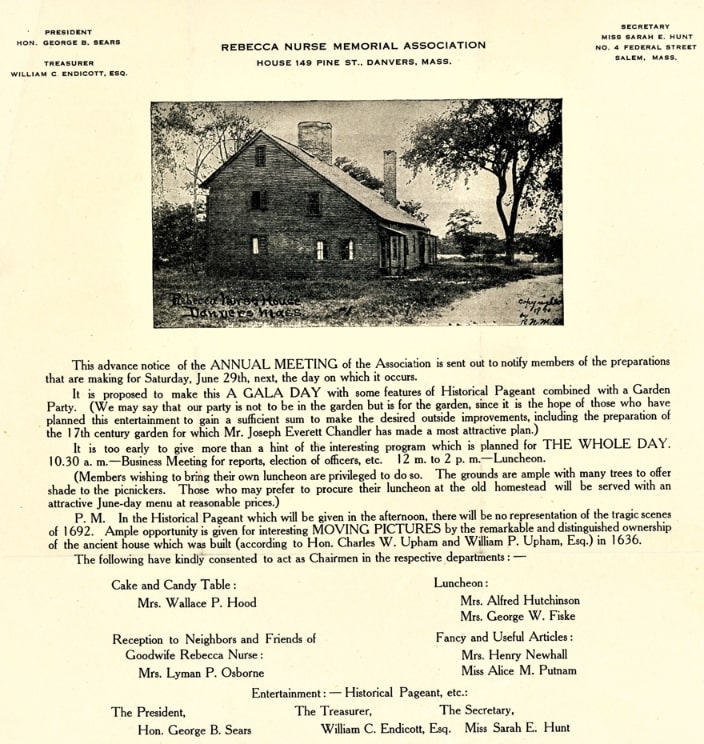
The first meeting of the association was held on 8 April 1909 at the office of Hon. Alden P. White. Other members mentioned in a later newsletter were as follows: Mrs. Wallace P. Hood, Mrs. Alfred Hutchinson, Mrs. George W. Fiske, Mrs. Henry Newhall, Alice M. Putnam, Lyman P. Osborne, and George B. Sears.
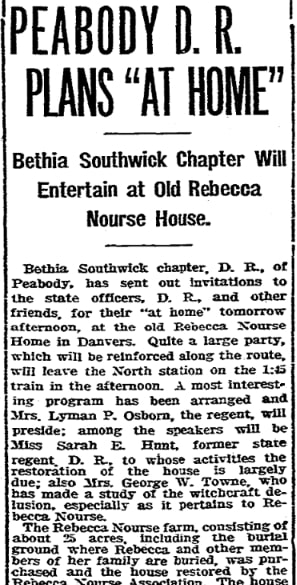
In this article, Sarah was recognized for her conservation efforts, and was set to attend the Southwick Chapter of the Daughters of the Revolution meeting in 1910, hosted at the Rebecca Nurse Homestead.
The article reported that Sarah, “to whose activities the restoration of the house is largely due,” was among the speakers that day.
Also noted was Mrs. George Warren Towne, a researcher on witchcraft, especially on the subject of her ancestor Rebecca Nurse.
Stay tuned for more about Sarah E. Hunt’s preservation efforts!
Further reading: Chronicles of Danvers
Explore over 330 years of newspapers and historical records in GenealogyBank. Discover your family story! Start a 7-Day Free Trial
Note on the header image: witchcraft trial at Salem Village. The central figure in this 1876 illustration of the courtroom is usually identified as Mary Walcott. Credit: Wikimedia Commons.

I am descended from Rebecca Nurse on my parents’ sides.
I’m descended from Rebecca Nurse. She is my 9G Grandmother on my father’s side of the family.
Thank you for sharing Paul! I am glad you found this site and could read more on your ancestor.